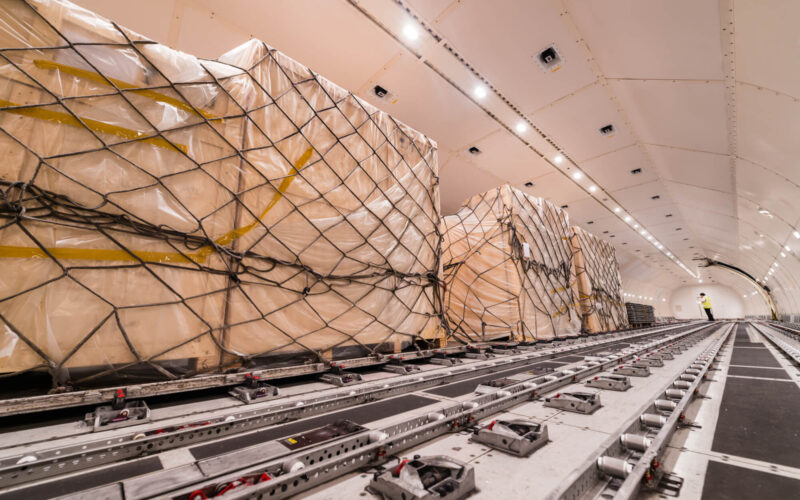Supply chain disruptions, including employees being in quarantine due to COVID-19, dampened the sterling performance of air cargo growth in November 2021.
Air cargo has been a strong performer this year, with the International Air Transport Association (IATA) predicting record revenues of $175 billion for 2021. The stalled growth for November is therefore somewhat unexpected, IATA said, noting that economic factors that usually drive air cargo demand, such as retail sales and global trade, remain strong.
Global cargo demand, measured in cargo-ton-kilometers, rose 3.7% in November 2021, compared to the pre-pandemic level of November 2019. IATA noted in its monthly cargo update on January 11, 2022, that this 3.7% rise was “significantly lower” than the 8.2% growth seen in October 2021.
“Manufacturers, for example, were unable to get vital goods to where they were needed, including PPE,” IATA Director General Willie Walsh said in the statement. “Governments must act quickly to relieve pressure on global supply chains before it permanently dents the shape of the economic recovery from COVID-19.”
IATA said the slower growth was down to labor shortages caused partly by employees being in quarantine, insufficient storage space at some airports and backlogs caused by the traditional end of year cargo rush. The association highlighted New York JFK, Los Angeles and Amsterdam and airports that reported congestion.
“All economic indicators pointed towards continued strong demand, but the pressures of labor shortages and constraints across the logistics system unexpectedly resulted in lost growth opportunities,” Walsh commented.
IATA provided details of the cargo performance in different regions. North American carriers saw international cargo volumes rise 11.4% in November 2021, almost half of the 20.3% growth seen in October 2021. European carriers reported a rise of just 0.3% in international cargo volumes, again far below the 7.1% rise they enjoyed in October.
Asia-Pacific airlines performed better, registering a 5.2% growth rate in November 2021, just below the 5.9% rise reported for October 2021.
How did passenger demand perform in November?
IATA has also released its monthly passenger traffic update for November 2021. Passenger traffic levels are still far below pre-pandemic levels but did improve in November. However, the emergence of the Omicron variant of COVID-19 at the end of the month has led to weaker ticket sales and forced airlines to cut flights due to staffing issues.
Lufthansa (LHAB) (LHA) and Ryanair are among those cutting schedules due to weaker demand, while others around the world, from JetBlue (JBLU) to Qantas and Finnair, have cited Omicron-related staff sickness as reasons for scrapping flights.
In November 2021, demand for air travel, measured in revenue-passenger-kilometers, was down 47% compared to November 2019. The drop for October 2021 was 48.9%, so November represented a slight improvement, IATA said.
IATA’s Walsh said governments had “over-reacted” to the Omicron variant, imposing travel restrictions that have little effect on virus transmission but did cause international ticket sales to fall sharply in December 2021 and January 2022.
“The recovery in air traffic continued in November,” Walsh said. “Unfortunately, governments over-reacted to the emergence of the Omicron variant at the close of the month and resorted to the tried-and-failed methods of border closures, excessive testing of travelers and quarantine to slow the spread.”
Walsh continued: “If the experience of the last 22 months has shown anything, it is that there is little to no correlation between the introduction of travel restrictions and preventing transmission of the virus across borders.”

